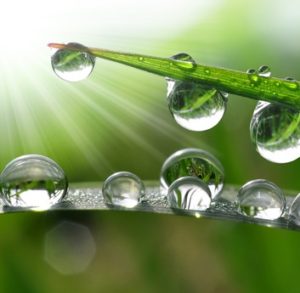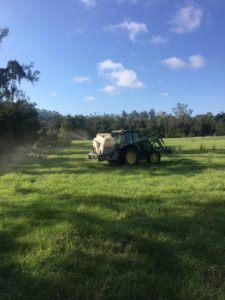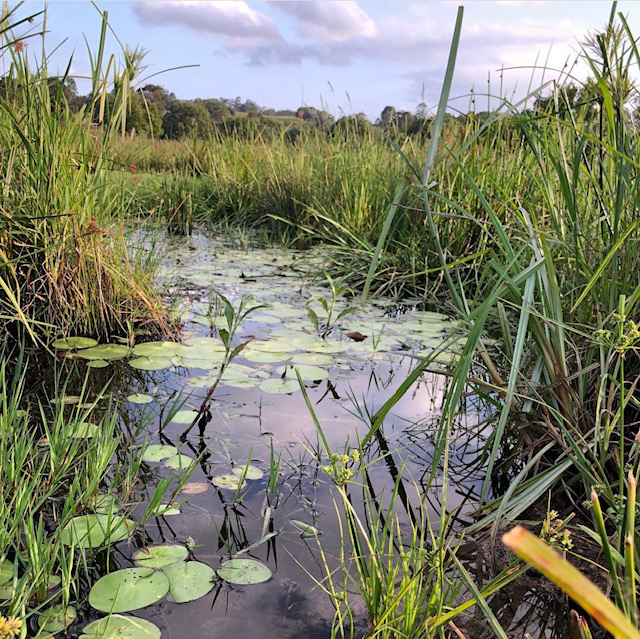By Tim Scott

Kandanga Farm Store’s recent soil health in-store day “From the Ground Up” showed that we have a major problem on our hands that requires action NOW.
Previous soil health days may yield a dozen or so attendees but this time over 140 people travelled in from many areas of our state highlighting the upswing in concern about the current state of play. Of course we had some great speakers not only on how to reverse the soil degradation issues linked to land management practices, but also the belief system behind the situation we now find ourselves in and even how human health is directly linked to soil health.
I have heard people refer to “nature” as something that is a removed from them. An area of interest or somewhere to go. We are part of nature and if you have created a “nature” of death around you, then that’s what you are part of! We are in it and although we are not integral- and in many cases a massive threat; we are not isolated from nature. We are probably the only species that, if removed, the rest of nature would be better off for it. We also have the most potential to positively impact nature. Knowledge is key and there is no substitute for getting education on this critical topic, so please talk to us at the store about sources of good information.
“Greenhouse Gasses” are often touted as the major (or the only) issue around climate change. Those who have walked across a sealed carpark on a hot day or bare dirt on a dewy morning not even getting wet feet, may have twigged that there are other (possibly larger) contributors.

Dew on grass
Natural Sequence Farming highlights the importance of green surface area are as a measure of landscape health. Green plants transpire & photosynthesise creating their own microclimate. Not only do green plants stabilise the daily temperature and humidity fluctuations but they have a symbiotic relationship with massive populations of soil microbes meaning nutrients, moisture and organic matter cycle rather than laying dormant or dead.
Urban and farming systems that result in ANY period of time where any soil surface isn’t covered in live plants (of any type) is ultimately destroying soil and contributing to climate change. This is not a problem that will go away (while humans are still here anyway). A recent quote through the Savoury Institute estimated we have just 60 harvests left with the soil we currently have. Not to be alarmist, but what happens after that?
As a farmer, a conservationist, a gardener, a forester, or a community member; every-time you allow a green plant to be killed (yes “weeds are plants”) you are contributing to this problem. For me, in land management, our three biggest tools are the three biggest problems. Ploughing, burning and spraying are the best ways to destroy soil microbes and kill land. Some believe it’s OK to “take one step back in order to take two forward”. A good theory, except often that one step back is three and the land never totally recovers. In my opinion, animal impact, microbes, insects and recovery is the best way to heal land, slower and more subtle than steel and diesel.
I was shocked this week when applying a microbe brew across our farms that the only paddock I had cultivated on one farm (almost 15 years prior) still was suffering the effects with areas of dieback, compaction, sparse and undesirable weeds (trying to fix the problem) with adjoining paddocks a thick carpet of desirable photosynthesising green leaves. The only difference between that degraded paddock and the neighbouring healthy ones was my management.
Focus on what you want to be there, not what you don’t.

Replenishing microbe populations on Kandanga Farm
Yes, nature does try and heal itself but that process gets more and more difficult as our actions to work against nature get more and more prolific. In our part of the world, we have issues of creeks drying out quickly and more often in the dry season and running more prolifically in the wet as catchments degrade and spring fed sources disappear while burning, clearing and spraying (not to mention urban design around increasing runoff out of built-up infrastructure) increases runoff across the land when it does rain. Instead of improving infiltration and stopping or slowing overland flow we have sped it up. The system developed over just a couple of generations is severely broken, and it’s my feeling that we don’t even have a couple of generations to fix it.
 When we speed up water flow
When we speed up water flow
 When we slow down the water flow
When we slow down the water flow
Change your actions (or inactions) by coming in to Kandanga Farm Store or following our work on-line. Buy food from actual farmers who have transparent regenerative production systems. Don’t buy things in packages unrecognisable as food and shorten your supply chain. Ask your council about registering on their NO SPRAY registry and lobby hard for a change in urban infrastructure planning rules. Stop burning (before you say it, aboriginals weren’t burning lantana and other introduced high-heat undergrowth plants), put your offset disk plough in the dam as a great fish habitat and lobby your Landcare groups, Rural & Hardware stores and Councils to eliminate herbicides and synthetic fertiliser sales. Change your view on what a “healthy” landscape looks like and trust nature to heal itself rather than disrupting the process.
